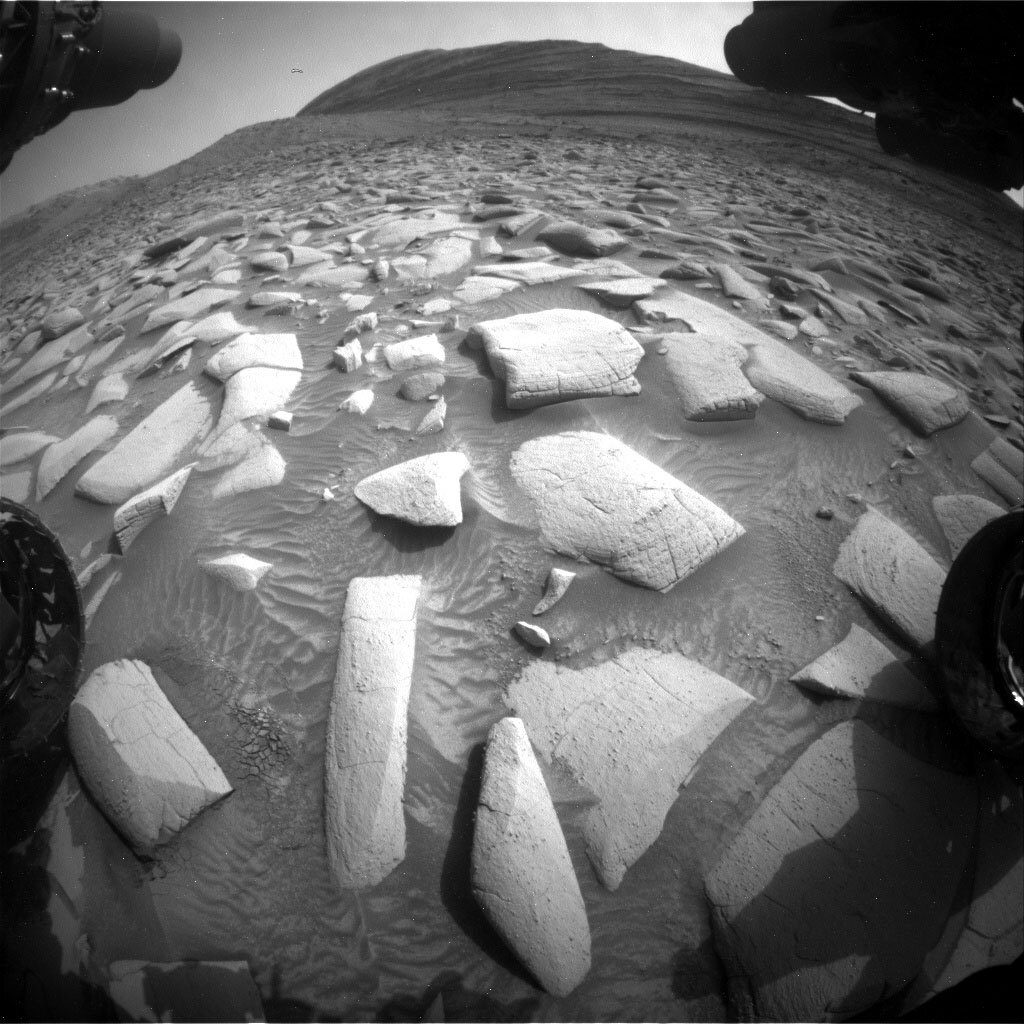Earth planning date: Monday, April 8, 2024
It's a rocky road out there (and solar eclipse day on Earth!). Regular readers of the blog will have noticed the terrain change, and the many rounded rocks that are appearing embedded in sand. We've had a few instances, here and at other locations before, where rocks were embedded in sand, where drives did not complete or a wheel ended up on a rock. A blog that I still remember is the one by my fellow blogger Natalie, where she called it a ‘wheelie' – of course not an official term! The question I am always asking myself is: if I had a 4x4 all-terrain vehicle, would I like to drive there? Well, it would be doable, but like is an entirely different question. Yes, if you wonder, I am not very adventurous behind the steering wheel of a car, especially when I am far away from any civilization. So, a big shout out to our rover drivers who navigate through this, safely and without the benefit of being there to make real time adjustments. We couldn't do any science without them!
This morning, the first thing that caught my eye was the image from the hazard camera, which you can see above. There is a little rock, right under the left wheel, and you can see how the sand around it has changed its surface texture compared to other places. Someone called it ‘breadcrust texture' (not an official geologic term, but I am sure you know what they meant). That's a telltale sign that this rock moved, even if only slightly. And you can see a little scratch on the rock, too. Hence, we decided that it is not safe to move the arm, and APXS and MAHLI are getting a break. Their loss is mast-instrument's gain, of course and we have four long distance RMIs in the plan, two LIBS observations and a lot of atmospheric investigations! In detail these are:
On sol 4150 the plan starts with a LIBS measurement on a target called "Deadhorse Lake," which is a bedrock targets – a special name for a standard target. There is more than one way to stand out, I guess! ChemCam continues its activities with two long distance RMIs on the Fascination Turret target that has been in the focus of many images before and we continue to add more and more fascinating details to our range of observations. Whoever named this target had a good sense for what was going to come, a sense that they probably got from looking at orbital data and images and at images we got from further away. Mastcam has a packed programme, too. ENV brings dust devil movies into the plan in this science block, too. After that, Mastcam takes over and documents the LIBS target and adds a small mosaic to document the target "Hospital Rock," and images the upper Geddiz Vallis Ridge with a large, 25 frame mosaic.
On sol 4151, ChemCam starts off with observing a sand target called "Avalanche Lake," and adding two long distance RMIs on the target area Kukenan. Mastcam again documents the ChemCam target and has an observation of their own with 28 frames looking at the target "Shepherd Creek." But with no arm activities there is plenty of time for more atmospheric investigations, which include another dust devil movie, then looking at the horizon to check atmospheric dust levels, a cadence which is repeated three more times in the plan, taking full advantage of the power available to better understand the atmospheric changes. In addition, the DAN instrument observes the subsurface, and the weather station continues its cadence of measurements. And when we wake up in two days time here on Earth, we expect the rover to also have driven through another 15 or so meters across this challenging terrain, and hopefully it won't be perched on a rock again... but... that's offroad driving of the hardest kind, and we are safe, which is what matters most... and I can report that those of us lucky enough to be in the path of the solar eclipse also got to see it. It's a practical demonstration of orbital mechanics, not to be missed!
Written by Susanne Schwenzer, Planetary Geologist at The Open University
from NASA Mars Rover Curiosity: Mission Updates https://ift.tt/lrqn4uG

Comments
Post a Comment